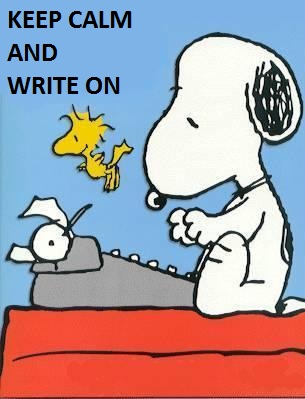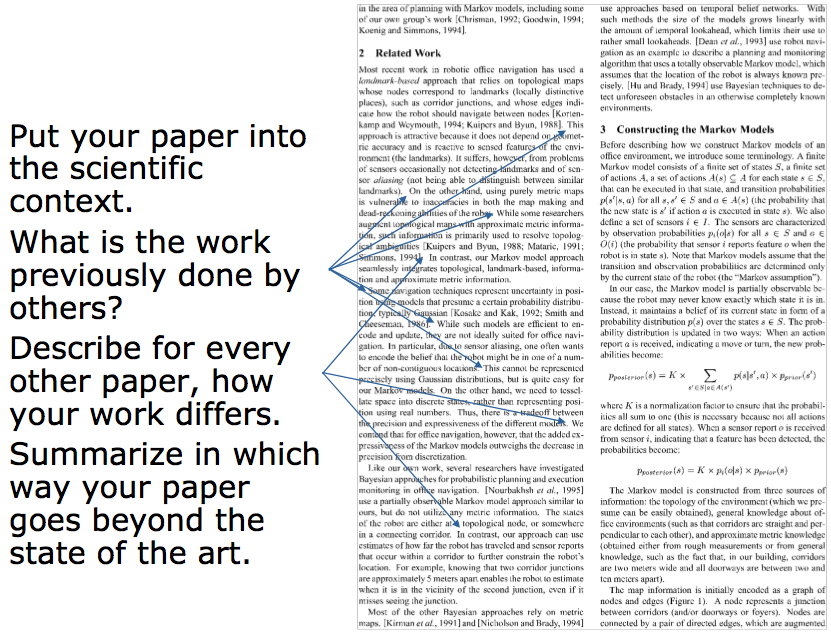Writing an Effective Introduction
What question did you ask in your experiment? Why is it interesting?
The introduction summarizes the relevant literature so that the reader will understand
why you were interested in the question you asked. One to fo ur paragraphs should be
enough. End with a sentence explaining the specific question you asked in this experiment.
A Lost Source...
The introduction (1 page)
1. Describe the problem 2. State your contributions ...and that is all
Describe the problem: Use an example to introduce the problem State your contributions: Write the list of contributions first The list of contributions drives the entire paper: the paper substantiates the claims you have made Reader thinks “gosh, if they can really deliver this, that’s be exciting; I’d better read on”
Contributions should be refutable
| We describe the robot system. It is really cool. | We give the syntax and semantics of a language that supports concurrent processes (Section 3). Its innovative. |
| We study its properties | We prove that the type system is sound, and that type checking is decidable (Section 4). |
| We have used WizWoz in practice. | We have built a GUI toolkit in WizWoz, and used it to implement a text editor (Section 5). The result is half the length of the Java version. |
No “rest of this paper is…”
Not: “The rest of this paper is structured as follows. Section 2 introduces the problem. Section 3 ... Finally, Section 8 concludes". Instead, use forward references from the narrative in the introduction. The introduction (including the contributions) should survey the whole paper, and therefore forward reference every important part.
 You should clearly say what your contribution is. Reviewers are lazy, they do not want to have to figure out what your message is. Spend some time telling us exactly what your contribution is. Spell it out, do not assume we will read the paper carefully. [4]
You should clearly say what your contribution is. Reviewers are lazy, they do not want to have to figure out what your message is. Spend some time telling us exactly what your contribution is. Spell it out, do not assume we will read the paper carefully. [4]The review of related work in the introduction allows you to relate your own contribution to all of the related work. This may result even in a large reference section! Remember, people like to be cited, so make sure you cite every paper that might have some relevance. [4] In general, sharing credit takes no credit away from you but ensures that more people will bring up your work favorably!
The purpose of the Introduction is to stimulate the reader’s interest and to provide pertinent background information necessary to understand the rest of the paper. You must summarize the problem to be addressed, give background on the subject, discuss previous research on the topic, and explain exactly what the paper will address, why, and how. Besides motivating a reader to read your manuscript and to care about your results, the Introduction is useful also to the journal’s reviewers and editors in judging the importance of your manuscript.
An Introduction is usually 300 to 500 words, but may be more, depending on the journal and the topic. Therefore, the Introduction needs to be very concise, well structured, and inclusive of all the information needed to follow the development of your findings.
Some people recommend that the Introduction be the first section written when writing a manuscript. If you need help beginning, please read Section [sec:Developing-an-Effective-First-Draft].
Below are the steps in developing an effective Introduction. However, since every journal/conference is different, it is important that you look at papers in your targeted journal/conference to determine whether they use all of these steps. For example, some journals do not include conclusions in the Introduction.
1. Begin the Introduction by providing a concise background account of the problem studied.
2. State the objective of the investigation. Your research objective is the most important part of the introduction.
3. Establish the significance of your work: Why was there a need to conduct the study? 4. Introduce the reader to the pertinent literature. Do not give a full history of the topic.
4. Only quote previous work having direct bearing on the present problem.
5. Clearly state your hypothesis, the variables investigated, and concisely summarize the methods used.
6. Define any abbreviations or specialized terms.
7. Provide a concise discussion of the results and findings of other studies so the reader understands the big picture.
8. Describe some of the major findings presented in your manuscript and explain how they contribute to the larger field of research.
9. State the principal conclusions derived from your results.
10. Identify any questions left unanswered and any new questions generated by your study.
\noindent Other points to consider when writing your Introduction:
1. Be aware of who will be reading your manuscript and make sure the Introduction is directed to that audience.
2. Move from general to specific: from the problem in the real world to the literature to your research.
3. Write in the present tense except for what you did or found, which should be in the past tense.
4. Be concise.


